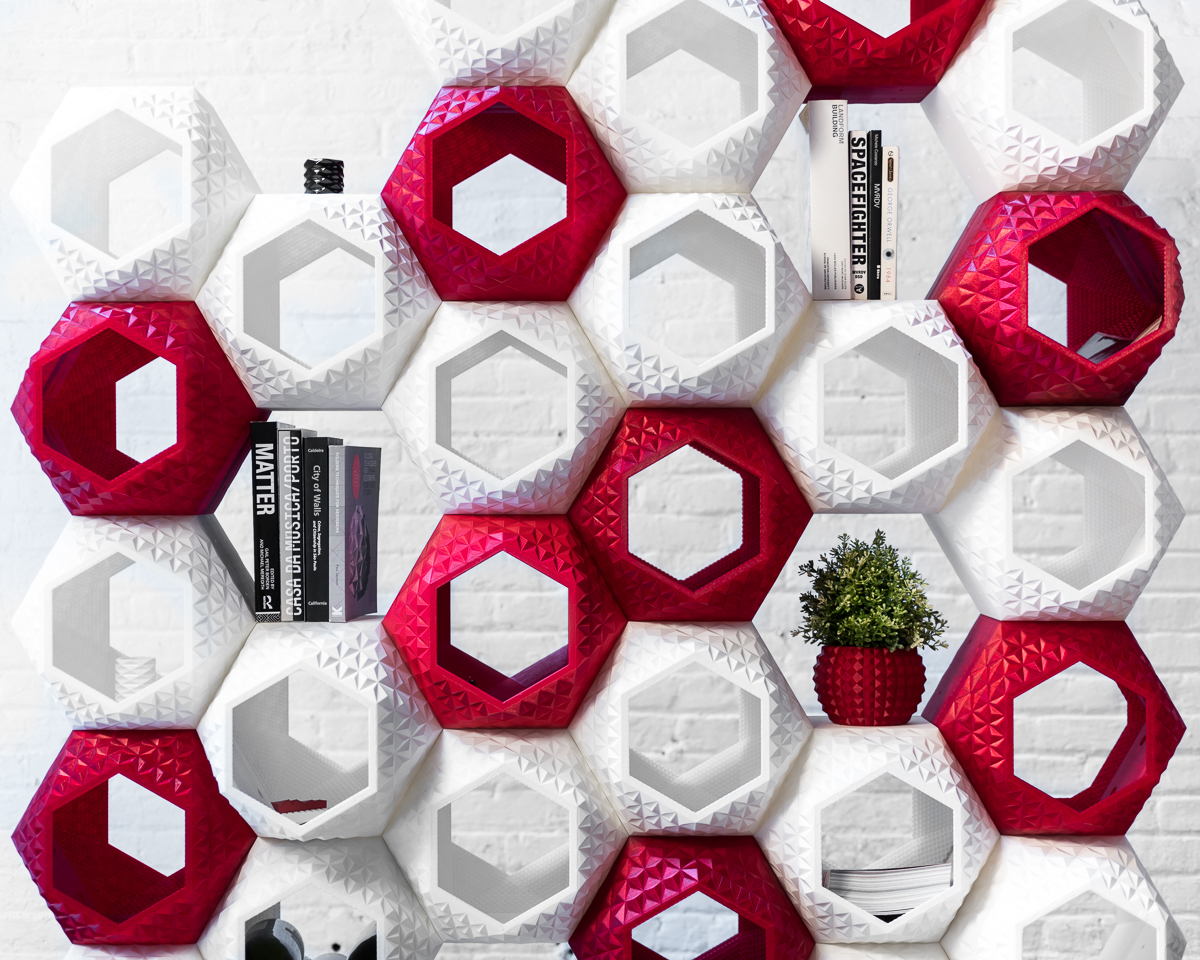Designers and architects are using 3D printing to create unique spaces and statement pieces that can be tailored to the exact specifications of a client or brand. Using additive manufacturing means that designers can approach function and aesthetic from a new perspective to create fresh consumer experiences. It streamlines design processes and introduces new textures, shapes and ways of integrating form and function. It also facilitates clients’ abilities to participate in the design of their own space by being able to customize pieces to suit their personal taste. Whether it is in furniture design, interior architecture or commercial merchandising, 3D printing ensures the development of never-before-seen innovation in shaping our interior spaces.
3D Printed Models and Miniatures
Models of Interior Spaces and Architecture
3D Printing allows interior models and miniatures to achieve the highest amount of detail and realism and can be edited much easier than traditionally made foam or cardboard models. They can be printed in full color, with appropriate materials and achieve more complex design shapes, so that no detail is left out and every ounce of information is made available to clients. Depending on what aspect of the interior is being showcased, the model can feature see-through walls, and pieces can come apart for increased visibility. Clients are able to see exact proportions of interiors, like how much space their own car will take up in their garage, or how light and shadows will fall on their favorite artwork. The textures of floors, roofs and other surfaces are more tangible. 3d printing helps paint a full picture of the interior architecture and design of a space and ensures that all vital information is being communicated between design teams and clients or prospective clients.
Furniture and Appliance Miniatures
3D printing allows for a high level of intricacy and can produce miniatures or any scale models of furniture for pre-existing pieces or as concept models. These miniatures can be quickly switched out based on the client’s feedback. Models can also be sent directly to clients to showcase what is possible and stoke customer curiosity and enthusiasm.
Prototyping
3D printing streamlines the design and prototyping processes and this is a tremendous advantage for the interior design and architecture industries. You can create a model at any scale to test and illustrate design concepts quickly and efficiently before ramping up final production. Even if the final product will be produced with other manufacturing methods, using a 3D printed prototype instead of a 2D drawing or rendering will improve communication and ease the design workflow.
Extraordinary Designs with Geometric Freedom
3D printing makes it possible to produce more complex and ornate designs, especially with materials such as the Stereolithography (SLA) options offered by Shapeways. With materials that allow for much greater detail and accuracy, designers have more freedom to explore unprecedented geometric designs to create furniture and landscapes as imagined, and could even design unique end-use ready household items customized to fit their vision and their clients’ needs. Here are some examples:
Design with Lattice Structures
These DXV Faucets use additive manufacturing to create unique designs, some of which integrate tiny waterways directly into their lattice structure making the flow of water seem to appear from nowhere.
Nature-Inspired Patterns
Design studio Nervous System prints their Hyphae Lamps through Shapeways and use a complex lattice-like pattern inspired by the veins of leaves to cast light in a dramatic way. 3D printing facilitates these highly intricate patterns that would be much more difficult to achieve through traditional manufacturing.
Algorithm-Based Textures
Michael Hansmeyer uses 3D printing to generate bizarre and completely unique wall textures out of sandstone using an algorithm. The Subdivided Columns showcase incredibly intricate textures that result from the design of a process that can automatically create endless possible permutations of columns, each of which would be one-of-a-kind but still be identifiable within of the same design “family.”
There are many innovative pieces available that show the potential of 3D printing for furniture design as designers continue to explore how additive manufacturing can generate brand new aesthetics.

Customization Potential
Interior and furniture design are industries that benefit greatly from customization. Here are some examples that can inspire new possibilities of using this technology:
Catering to Client Tastes
These customizable Side Tables by Model No. Furniture are printed with biopolymers and plant-based resins to reduce waste and create a more eco-friendly production process as well as maintain flexibility for color and shape customization. 3D printing and digital fabrication make it easier for clients to choose their color and shape and designs can also be customized to fit within a determined space.
Creating Site-Specific Designs
Aectual’s Space Dividers are airy, filter sunlight and provide privacy and can be made to measure to fit the exact area they are needed. They are customizable in terms of storage needs, acoustics, the panel’s shape and they can also produce cubicles. Producing designs molded by clients’ preferences and tastes ensures a greater level of customer satisfaction.
Integrating Form and Function
Another way that 3D printing lends itself is its ability to seamlessly integrate function into the aesthetic of a piece. Take the Writing Counter at the Loft flagship store in Japan by DUS Architects, a sleek writing desk that incorporates stationary storage and display into its aesthetic. Not only would this make for a useful and aesthetically pleasing piece to have in a home or workspace, but it introduces new possibilities in the world of merchandising in commercial settings as well. DUS Architects’ designs at the Loft flagship store showcase new ways of combining storage and fresh merchandising opportunities with aesthetically vibrant structures with the use of 3D printing.
While traditional design and manufacturing methods will still play a big role in the interior design industry, it is clear that 3D printing offers a highly efficient way of designing the spaces we inhabit. It provides a productive method of meeting the rising demand for personalization and and will continue to evolve as design firms explore its capabilities.
Get in touch with Shapeways to see how you can introduce 3D printing into your design workflow!


